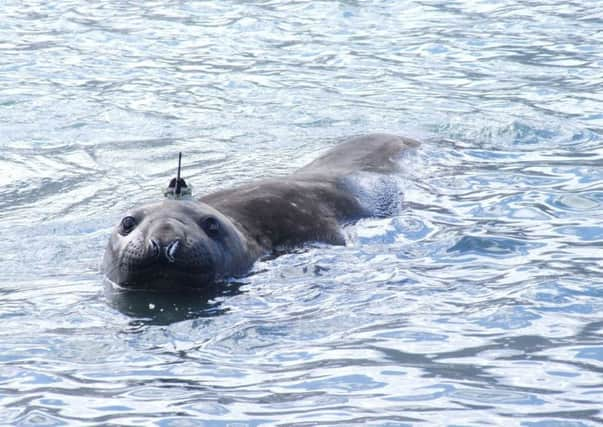Scottish academics set sail for Antarctic to study glacier melt


Academics from the University of St Andrews are setting sail today on the first ever ship-based research expedition to the Thwaites glacier, which is the size of the UK and would raise sea levels by almost a metre if melted.
Ice melting on Thwaites accounts for four per cent of global sea level rise, an amount that has virtually doubled since the 1990s.
Advertisement
Hide AdAdvertisement
Hide AdNow scientists from the International Thwaites Glacier Collaboration (ITGC) hope to determine how much more ice will disappear, and how fast, as the planet continues to warm.
Dr Lars Boehme and Guilherme Bortolotto De Oliveira, from the Sea Mammal Research Unit at St Andrews, are taking part in the 50-day scientific voyage.
Seal ecologist Dr Boehme will oversee the tagging of elephant seals and Weddell seals living near the ice front of the glacier in order to track their activities. He says the mammals are ideally positioned to provide information about areas that are hard for researchers to access.
It’s hoped their behaviour will shed new light on changes taking place on the frozen continent.
“These tiny sensors, which are temporarily glued to the animals’ fur and fall off during moulting, will allow us to measure the ocean’s heat, which can highly affect the melting rate of the floating part of the glacier,” said Dr Boehme.
“Getting the right data is particularly difficult, especially during the winter when the ocean surface is covered by sea ice and inaccessible for research ships. We will therefore tag 18 seals in this area.
“Oceanographic and behavioural data are then collected whenever the seal dives and sent back using satellites while the seal is back at the surface to take a breath.”
Thwaites glacier is one of the largest in Antarctica, meeting the ocean with a cliff face spanning 120km.
Advertisement
Hide AdAdvertisement
Hide AdIts flow rate has increased from 3km per year to 4km per year since 2006, dumping 126 gigatonnes of ice into the ocean annually.
The ITGC is funded by the UK Natural Environment Research Council and the US National Science Foundation.
The £20m project is the largest UK-US joint programme in Antarctica for more than 70 years and one of the most detailed and extensive examinations of a massive Antarctic glacier ever undertaken.